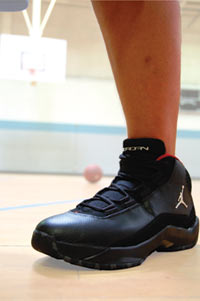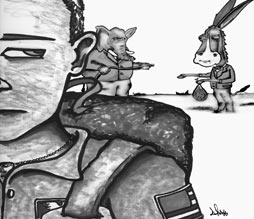Achievements know no cultural boundry

Hispanic Heritage Month, Sept. 15-Oct. 15, celebrates the anniversary of independence for five Latin American countries—Costa Rica, El Salvador, Guatemala, Honduras and Nicaragua, which began their independence on Sept. 15. In addition, Mexico declared its independence on Sept. 16 and Chile on Sept. 18. To recognize the achievements of men and women from those backgrounds, The Collegian looks at 10 who became first in their fields.
GERALDO RIVERA
By Gary Collins/reporter

First Hispanic named broadcaster of the year
Controversial talk show host and reporter Geraldo Rivera worked his way through the world of broadcast media.
In 1970, after graduating Brooklyn Law School and the Columbia University Graduate School of Journalism, Rivera was discovered by a television news producer while working as a lawyer for the Young Lords, a Puerto Rican activist group, beginning a long and controversial career.
Beginning at WABC-TV in New York as a reporter, he gained national attention and an Emmy for his coverage of Willowbrook State School’s neglect and abuse of patients. His report on the abuse at Willowbrook moved singer John Lennon enough to collaborate with Rivera to perform the benefit concert One to One. He won Broadcaster of the Year in 1972 and 1974, the first Hispanic to do so.
While working for ABC News as host of Goodnight America, he publicly criticized Roone Arledge, then ABC News president, for cutting a story by reporter Sylvia Chase, about the rumored affairs between Marilyn Monroe and John and Robert Kennedy. Rivera thought the story was pulled because Pierre Salinger, a former Kennedy press secretary, was working for ABC at the time. Rivera was fired.
In 1987 Rivera returned to television with his talk show Geraldo; controversy was not far behind. In 1988 his nose was broken in fight between Nazi skinheads, anti-racist skinheads and black and Jewish activists.
In the late ’90s, he worked briefly for NBC News before leaving to go to Fox News as a war correspondent. While serving as an embedded reporter in 2003 in Iraq, he revealed an upcoming operation even drawing a map in the sand, Rivera was eventually expelled from Iraq.
During evacuations after Hurricane Katrina, he was accused of pushing aside a rescue worker so he could be taped rescuing a wheelchair-bound woman.
While host of his Fox show At Large with Geraldo, he got into a shouting match with Bill O’Reilly over a drunken-driving death supposedly by an illegal immigrant. Earlier this month Rivera criticized Fox News contributor Michelle Malkin over comments she made, calling her vile and hateful and saying if he saw her he would spit on her.
JOAN BAEZ
By Susan Tallant/reporter

First Hispanic entertainer on cover of Time magazine
Time magazine’s first Hispanic entertainer on the cover was Joan Baez, who has “a voice as clear as air in the autumn, a vibrant, strong, untrained and thrilling soprano,” according to the 1962 article.
Baez, born Jan. 9, 1941, to a Mexican-American physicist and a Scottish drama teacher, became a political symbol in the ’60s. Involved in the civil rights movement, she voiced her opinion through song while conducting Southern college campus tours with a no-discrimination policy for audiences.
In the early ’60s, she released traditional folk albums with political leanings including the song, “We Shall Overcome,” which she sang before an estimated quarter of a million people at the civil rights march on Washington.
In 1963, Baez was nominated for a Grammy Award in the Best Folk Recording category. She also played an important role in the rise of Bob Dylan by recording his songs and sharing the stage with him in the early ’60s. Their romance provided material for Baez’s hit “Diamonds and Rust” in 1975.
Baez, still on tour, received a Lifetime Achievement Award from the National Academy of Recording Arts and Sciences at the 2007 Grammys.
DAVID FARRAGUT
By Mark Bauer/reporter
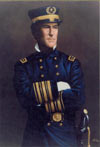
First Hispanic promoted to admiral in U.S. Navy
“Damn the torpedoes! Full speed ahead,” David Farragut, Northern naval commander, shouted from atop the mainsail of the Hartford. Timid after witnessing the accompanying Tecumseh sink from a torpedo strike, the sailors on board the Hartford needed direction from the Tennessee native.
Originally born as James G. Farragut in 1801 to Spaniard-emigrant Jorge Farragut, the younger Farragut quickly fell into the seafaring trade. In order to be trained as a naval officer, James came under the guardianship of a navy commander, David Porter. He changed his name to David in order to reflect that of his adopted father’s.
Under Porter’s guidance and upbringing, Farragut had seen combat and commanded a vessel by age 12.
Fifty years later, he was given control over 18 ships and a crew of 700 men.
It was after a series of victories and defeats at sea that Farragut found himself amid one of the most decisive naval battles of the Civil War. On the morning of Aug. 5, 1864, Farragut hastened to rally the Union fleet as they began the attack on the Confederate-controlled Mobile Bay. It was here that Farragut uttered those famous words, “full speed ahead!”
And it was here that Mobile Bay fell to the Union.
When he returned home in December 1864, Farragut was considered a hero. In 1866, he became the first person in U.S. Naval history to be awarded the rank of admiral. As such, David G. Farragut also became the first Hispanic-
American to receive the prestigious title.
OSCAR HIJUELOS
By Katie Hudson-Martinez/reporter

First Hispanic novelist to win Pulitzer Prize for fiction
Oscar Hijuelos won the 1990 Pulitzer Prize for his book, Mambo Kings Sing Songs from the Heart, making him the first Hispanic writer to receive this coveted award.
Hijuelos was born in New York City to Cuban immigrant parents in 1951. He earned a master’s degree in creative writing from City College in New York.
His books often parallel some of his own life experiences and are rich with Cuban and Cuban-American culture.
His first published book, Our House in the Last World, won several awards including The American Academy of Arts and Letters’ Rome Prize, an Ingram-Merrill fellowship and a fellowship from the National Endowment for the Arts.
His second book, Mambo Kings Sing Songs from the Heart, was made into a popular movie starring Antonio Banderas and Armand Assante, and later a Broadway musical.
He has since written four more books including Mr. Ives’ Christmas, A Simple Habana Melody and Empress of the Splendid Season, all critically acclaimed.
Hijuelos is currently working on a novel for publisher Harper-Collins. His works have been read all over the world and have been translated into 25 different languages.
HENRY CISNEROS
By André Green/reporter
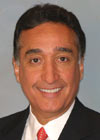
First Hispanic elected mayor of major U.S. city
As a public servant and private citizen, Henry Cisneros would accomplish many “firsts” throughout his career.
Cisneros was born in San Antonio, the eldest of five, to his father George, a Mexican-American U.S. Army civilian employee, and Mexican-born mother Elvira.
In 1968, Cisneros received his bachelor’s degree in English and city management. A national student current-events conference opened his eyes to the problems facing his native city’s poor and unfortunate. Cisneros decided to change his focus from education to public policy, completing his doctorate in public administration in 1975.
After serving as San Antonio’s youngest city council representative, Cisneros became the first Hispanic mayor of a major U.S. city in 1981 with 63 percent of the vote. He was re-elected three times, winning with overwhelming margins.
As mayor, Cisneros oversaw the city’s increase in jobs, tourism and technological growth. He retired from public service in 1989 and founded Cisneros Asset Management Co.
In 1992, Cisneros became President Clinton’s secretary of housing and urban development. During his tenure, he worked to reverse perceived racism in the department’s policy and make the program more efficient.
JUAN MARICHALl
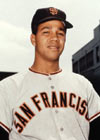
By John Garces/reporter
First Hispanic to pitch a no-hitter
The first Latin American pitcher to throw a no-hitter was Juan Marichal, June 15, 1963, against the Houston Colt .45s.
Born in Laguna Verde, Dominican Republic, in 1937, Marichal had a 16-year career in major league baseball, compiling 243 wins and 2,303 strikeouts.
During the 1960s, he won 191 games, more than any other National League pitcher.
He was selected to nine All-Star games and pitched in eight of them. He won the All-Star MVP in 1965, when he was the winning pitcher in the game. That same year, Marichal lost his cool and threw a bat at a Los Angeles Dodgers player, an event that would cast a shadow over him for the rest of his career.
He became the first Dominican-born player elected to the Baseball Hall of Fame in 1983 and was recently added to the Hall’s Veterans Committee.
He lives in Santo Domingo in his native Dominican Republic and is serving as the nation’s minister of sports.
CHRISTY TURLINGTON
By Susan Tallant/reporter

First Hispanic to reach super model status
The first Hispanic super model, Christy Turlington, began modeling at the age of 14 and signed with the Ford agency at 16.
Turlington was hired by Versace to model exclusively for him in Milan. Calvin Klein gave her a three-year, seven-figure contract for three months’ of work per year.
She returned to photo shoots and cat walks but then got bored and semi-retired at age 25 to go to school.She graduated in 1999 from New York University, where she studied art history, philosophy and literature.
After her father’s death in 1997, she started working with the American Cancer Society. She also works with Red, an organization founded by Bono that helps distribute medicine to HIV victims in Africa.
Turlington is a mother of two and owns two businesses.
“ I don’t know that I ever felt comfortable with [modeling]. It’s a derailing thing to be 15 years old, given lots of money and flown around the world,” she told the Telegraph last week.
RITCHIE VALENS
By Sarah McVean/reporter

First Hispanic recognized as rock ’n’ roll superstar
Remembered mostly in his all but too brief career for his biggest hit La Bamba, Ritchie Valens was the first Hispanic rock ’n’ roll star.
Born May 13, 1941, Richard Steven Valenzuela was raised in Pacoima, Los Angeles, Calif.
At 9, he got his first guitar, and by 12, he had written several songs, which were inspired by Mexican music.
While in high school in 1956, he joined a local garage band that performed at record shops in San Fernando Valley area. During one of these performances, the president of Del-Fi Records, Bob Keane, offered him a recording contract and became his manager. Keane shortened the singer’s name from Valenzula to Valens and added a “t” to Richie.
Valens’ first single Come On, Let’s Go in 1958 reached No. 42 in the U.S. and sold 750,000 copies.
In October 1958, the single Donna/La Bamba was issued. Contrary to popular belief, it was actually the ballad Donna that reached No. 2 on the charts and La Bamba, the B-side, reached only No. 22 in the U.S. but has been proved to be a more remembered song.
Valens was booked for the now infamous January 1959 Winter Dance Party tour, which included Dion and the Belmonts, Buddy Holly and J.P. Richardson, known as the Big Bopper. Their tour bus had developed heating problems and Holly’s drummer, Carl Bunch, came down with frostbite. After the Feb. 2 performance, Holly decided to charter a small plane for himself and his backup musicians, Waylon Jennings and Tommy Allsup, as transportation to their next show. Jennings gave up his seat to Richardson who had been running a fever. Valens tried to convince Allsup to give up his seat to him, and finally talked him into flipping a coin for it. Valens called heads, won the seat but lost his life.
The plane left at 1:30 a.m. and crashed soon after take off. The wreckage was found at 9:35 a.m. the next day. Valens body had been thrown 20 feet from the plane. Ritchie Valens was only 17 year old. Feb. 3, 1959, would be known years later by Don McLean, as the day the music died.
RITA MORENO
By Sara Pintilie/reporter

First Hispanic to receive top 4 performing awards: Oscar, Grammy, Tony, Emmy
Rita Moreno became the first Hispanic actress to win an Oscar. She won the Best Supporting Actress statuette for her performance in West Side Story in 1962.
Born in Puerto Rico in 1931 as Rosita Dolores Alverio, she moved to America and got her first break on Broadway in 1945 in the production of Skydrift.
She began her film career in her teens and broke the stereotype of Hispanic women only being seen as “spitfires.”
Her filmography includes Singin’ in the Rain, The King and I and more recently, the HBO TV series, Oz.
Though she has been in countless films, TV episodes and theater productions, her most notable role is in West Side Story as the Jet’s leader’s girlfriend, Anita.
She transferred back and forth from theater to film during her career and currently will be seen on the new CBS TV show, Cane.
Along with her Oscars, she won a Grammy for her work on The Electric Company soundtrack in 1972, Emmys for her work on The Rockford Files and The Muppet Show and a Tony in 1975 for her role in The Ritz.
She is one of nine (and the only Hispanic) to win the four major entertainment awards and did it in only 16 years—the shortest time out of the nine.
SEVERO OCHOA
By Susan Tallant/reporter

First Hispanic to receive Nobel in physiology, medicine
Severo Ochoa was awarded the Nobel Prize in Physiology or Medicine 1959 for the synthesis of ribonucleic acid (RNA).
Born in Spain, Ochoa’s interest in biology was inspired by the great Spanish neurologist, Ramón y Cajal. He went medical school at the University of Madrid, where he obtained his M.D. degree in 1929.
After graduating, Ochoa went to work under Otto Meyerhof, who influenced his outlook and training as he worked on the biochemistry and physiology of muscle.
He returned to Madrid in 1934 and worked on some of the enzymatic steps of glycolysis and fermentation and later worked on the biological function of vitamin B1 at Oxford University. In 1942 he was appointed research associate in medicine at the New York University School of Medicine.
Ochoa’s research has contributed much to the knowledge of the basic steps in the metabolism of carbohydrates and fatty acids, the utilization of carbon dioxide and the biosynthesis of nucleic acids.
In 1956, he became an American citizen.

























